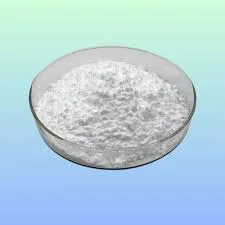
Dis . 22, 2024 12:12 Back to list
hydroxyethyl cellulose thickening mechanism
The Thickening Mechanism of Hydroxyethyl Cellulose An Overview
Hydroxyethyl cellulose (HEC) is a widely used non-ionic cellulose ether that has gained prominence in various industries, particularly in pharmaceuticals, personal care products, and construction materials. One of its primary functions is as a thickening agent, and understanding the mechanism by which HEC achieves this thickening effect is crucial for optimizing its application across different formulations.
Structure and Properties of Hydroxyethyl Cellulose
HEC is derived from the cellulose polymer, which undergoes a chemical modification process by the reaction with ethylene oxide. This results in the introduction of hydroxyethyl groups to the glucose units of cellulose, enhancing its solubility and functionalities without significantly altering its structure. HEC possesses unique properties, including excellent water solubility, non-toxic nature, and a high degree of substitution, which contributes to its effectiveness as a thickening agent.
Thickening Mechanism
The thickening mechanism of HEC primarily revolves around its ability to interact with water molecules and other components in a formulation. When HEC is added to water, it dissolves to form a viscous solution, which can significantly increase the viscosity of the liquid. This thickening effect can be attributed to several key factors
1. Hydration and Swelling Upon contact with water, HEC molecules absorb water and swell due to the hydrophilic nature of the hydroxyethyl groups. The extent of hydration leads to an increase in the volume of the HEC particles, creating a three-dimensional network that traps water within it.
2. Hydrogen Bonding The hydroxyl groups present in the HEC structure can form hydrogen bonds with water molecules. This interaction leads to the establishment of a network of hydrogen bonds that helps to stabilize the dispersion, contributing to the thickening effect. The more hydrogen bonds formed, the more viscous the solution becomes.
hydroxyethyl cellulose thickening mechanism

3. Chain Entanglement As HEC molecules dissolve and form a network, they can entangle with each other. This entanglement increases the viscosity of the solution because the movement of individual polymer chains is restricted. In lighter concentrations, the solution behaves like a Newtonian fluid, while at higher concentrations, it may exhibit non-Newtonian behavior, where viscosity decreases with increased shear rates.
4. Concentration Dependency The thickening effect of HEC is also influenced by its concentration in the formulation. Low concentrations yield moderate thickening, while higher concentrations lead to more significant viscosity increases. This characteristic allows formulators to tailor the viscosity of their products according to specific requirements.
5. pH and Ionic Strength The viscosity of HEC solutions can be affected by the pH and ionic strength of the formulation. Changes in pH can influence the solubility and hydrogen bonding interactions, while the presence of ions can screen the charges on HEC, impacting its ability to interact with water.
Applications and Implications
The thickening ability of HEC has important implications across various sectors. In the pharmaceutical industry, HEC is utilized in drug formulations to enhance the viscosity of suspensions and solutions, ensuring better stability and controlled release of active ingredients. In personal care products, it acts as a thickening agent in lotions, creams, and gels, providing improved texture and feel. Meanwhile, in construction, it enhances the workability and adhesion of cement mixtures.
Additionally, the eco-friendly nature of HEC, being biodegradable and derived from renewable resources, aligns with the growing trend towards sustainable formulations.
Conclusion
In summary, the thickening mechanism of hydroxyethyl cellulose is a multifaceted interaction of hydration, hydrogen bonding, chain entanglement, and concentration effects. Understanding these dynamics is essential for leveraging HEC’s full potential in various applications, ensuring optimal performance in product formulations. With its adaptability and efficacy, HEC continues to be a vital component in both industrial and consumer products.
-
Versatile Hpmc Uses in Different Industries
NewsJun.19,2025
-
Redispersible Powder's Role in Enhancing Durability of Construction Products
NewsJun.19,2025
-
Hydroxyethyl Cellulose Applications Driving Green Industrial Processes
NewsJun.19,2025
-
Exploring Different Redispersible Polymer Powder
NewsJun.19,2025
-
Choosing the Right Mortar Bonding Agent
NewsJun.19,2025
-
Applications and Significance of China Hpmc in Modern Industries
NewsJun.19,2025







